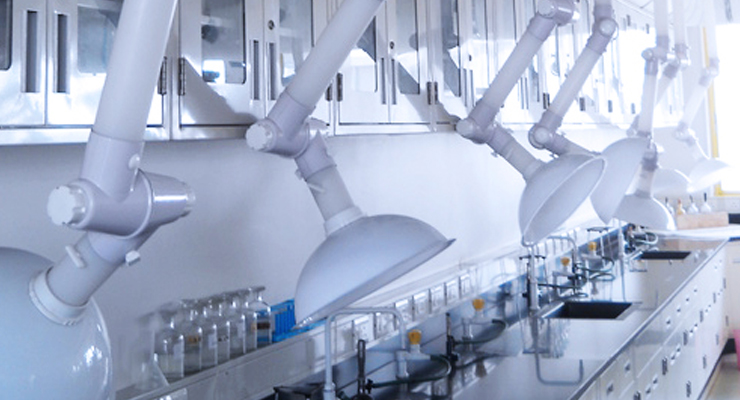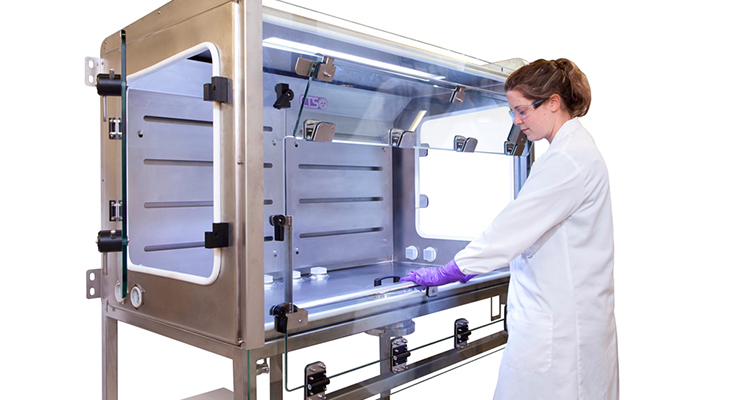LEV systems (Local Exhaust Ventilation systems), also known as extraction or fume control, can be very effective in controlling airborne contaminants. The following article discusses Point Extraction Ducts, LEV Enclosures and the design features and performance criteria for both of them.
Point Extraction Ducts

LEV Point extraction systems can be used as means of ventilation around equipment that may produce low hazard solvent vapour fumes. For example, HPLC systems, solvent reservoirs or liquid-handling equipment.
LEV Point Extraction Systems Design Features & Performance Criteria
- An LEV point extraction system will not actually enclose equipment. Consequently, they will not effectively protect operators from a hazardous working area, but it will provide extraction at the most likely point of vapour exposure.
- LEV performance can be measured either by using airflow smoke tubes (Gastec Tubes) and or by an air flow anemometer.
- LEV point extracts are generally comprised of flexible materials. As a result, the actual point of extract can be moved or “positioned”, which will affect the effectiveness of the system.
- Consideration should be given to fixing the LEV extract point in position, where feasible and warranted by the tasks at hand.
LEV Enclosures

LEV enclosures will provide a controlled extraction environment around a process or piece of instrumentation. They can be an effective alternative to a built-in fumehood system.
Design Features & Performance Criteria
- Ideally, an LEV Enclosure will have a Constant as opposed to a Variable Air Volume demand. This is to provide simplicity of introduction to existing laboratory facilities.
- An audible visual alarm system should be installed to alert the operator of an unsafe airflow condition.
- Consideration should be given to the ergonomics of the system. Specially, regarding the access to the instrumentation inside the enclosure is comfortable for the scientist.
Where spillage is a risk, a recessed base, or bunded (bermed) area must be incorporated. - An LEV should provide containment to BSEN14175 or ASHRAE 110 specifications, as with a fume hood.
LEV Systems Positioning
- The same criteria apply with LEV enclosures and their respective positioning, as do with Fume hoods, which you can read about on this article.
LEV enclosures are designed and built specifically to the customer’s requirements.
CTS LEV range of enclosures use a unique CAV (Constant Air Volume) sliding sash mechanism that allows the operator to have variable height access to equipment and processes. This system requires a much lower airflow than a standard fume hood, which saves significantly on energy costs.
At CTS Europe, we provide a full system design service and are happy to discuss your containment requirements. Call us today on +44 (0)2392 695521 or write to email us . We look forward to hearing from you!
